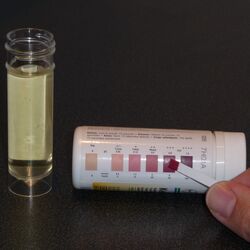Hi K9 Forum,
I am brand new to forum.
Wondering if anyone can help me with diet questions for my dog Buster on vetsulin twice a day. He was diagnosed 1 month ago. He lost weight and I can not get weight on him. Went to vet 1 week ago and we increased insulin to 9U and she said "let him eat whatever he wants and come back in two weeks --do not take sugars until day before apt with 12 hour curve".
I have increased his food and feed the same homemade diet recipe and teh same quantity at same times 7AM, 1PM, 7PM, and before bed at 10P. Today I decided I should take his blood sugar --it was 477 at 1 hour after afternoon snack and then 416 at 4 hours after snack.
Should I feed him twice or four times per day? Does he need more insulin or less food? I wonder if he is not gaining weight because he has high blood sugar or is it because he needs more insulin?
Any help much appreciated.
Teri and Buster
I am brand new to forum.
Wondering if anyone can help me with diet questions for my dog Buster on vetsulin twice a day. He was diagnosed 1 month ago. He lost weight and I can not get weight on him. Went to vet 1 week ago and we increased insulin to 9U and she said "let him eat whatever he wants and come back in two weeks --do not take sugars until day before apt with 12 hour curve".
I have increased his food and feed the same homemade diet recipe and teh same quantity at same times 7AM, 1PM, 7PM, and before bed at 10P. Today I decided I should take his blood sugar --it was 477 at 1 hour after afternoon snack and then 416 at 4 hours after snack.
Should I feed him twice or four times per day? Does he need more insulin or less food? I wonder if he is not gaining weight because he has high blood sugar or is it because he needs more insulin?
Any help much appreciated.
Teri and Buster



Comment